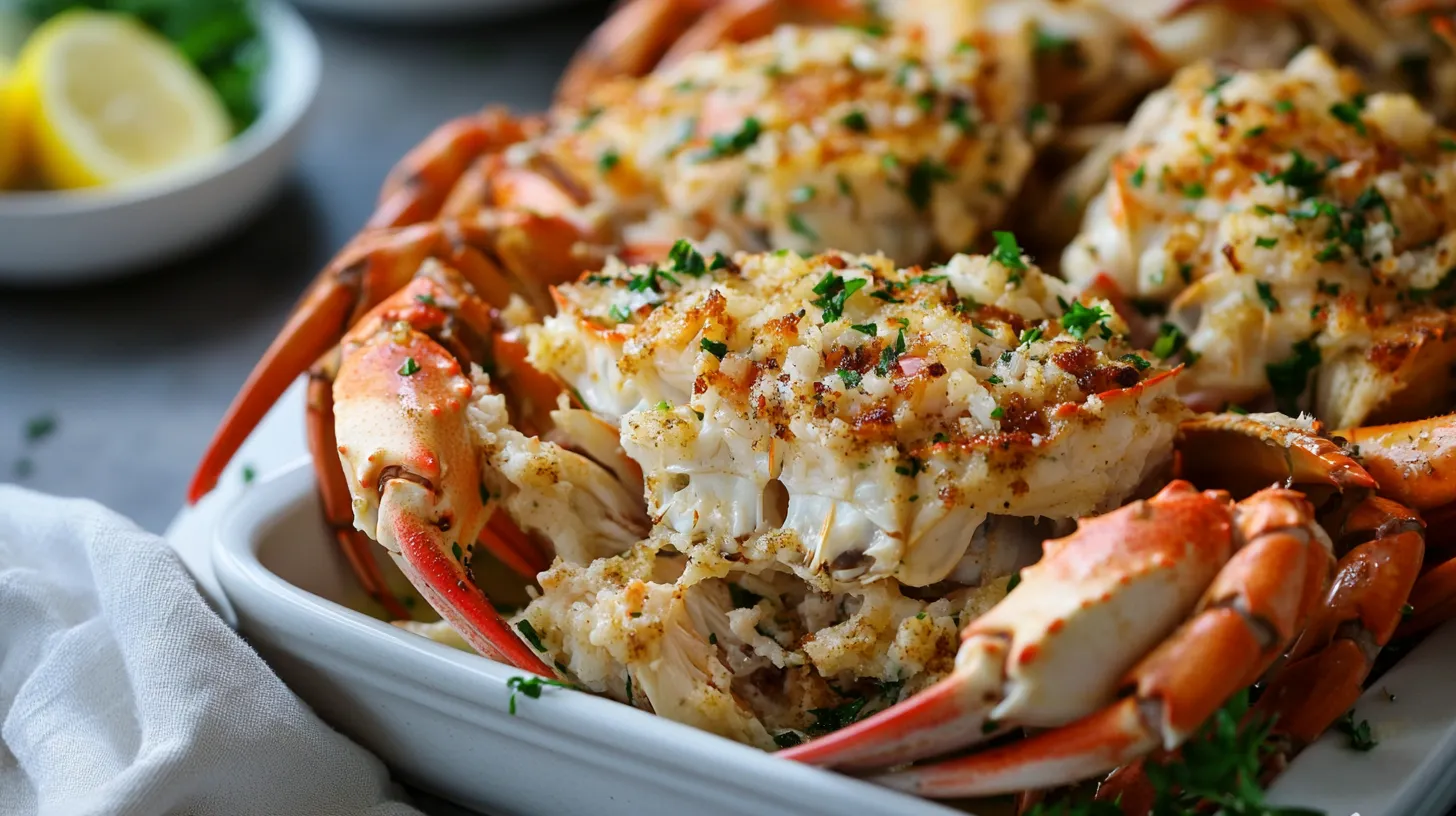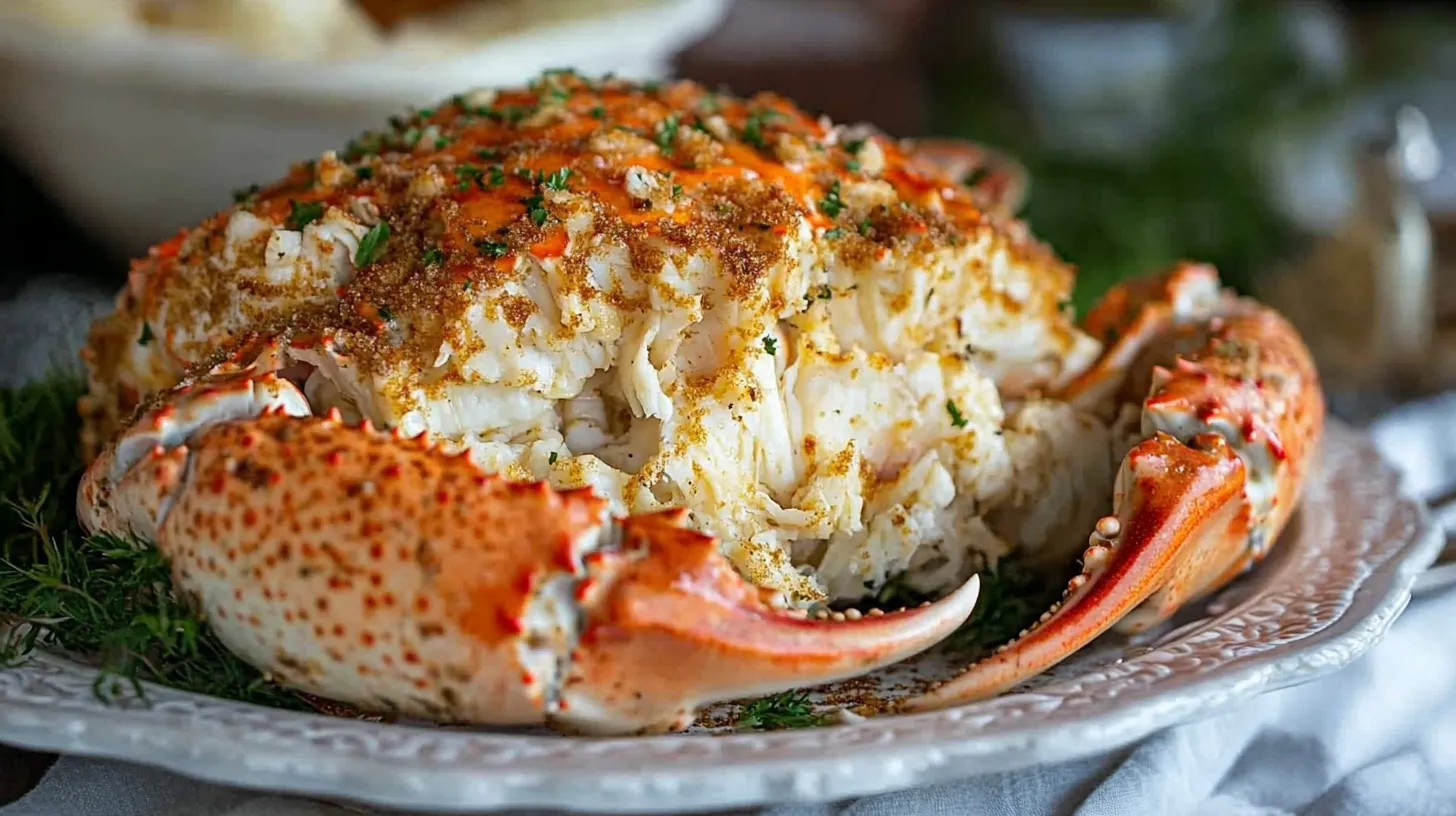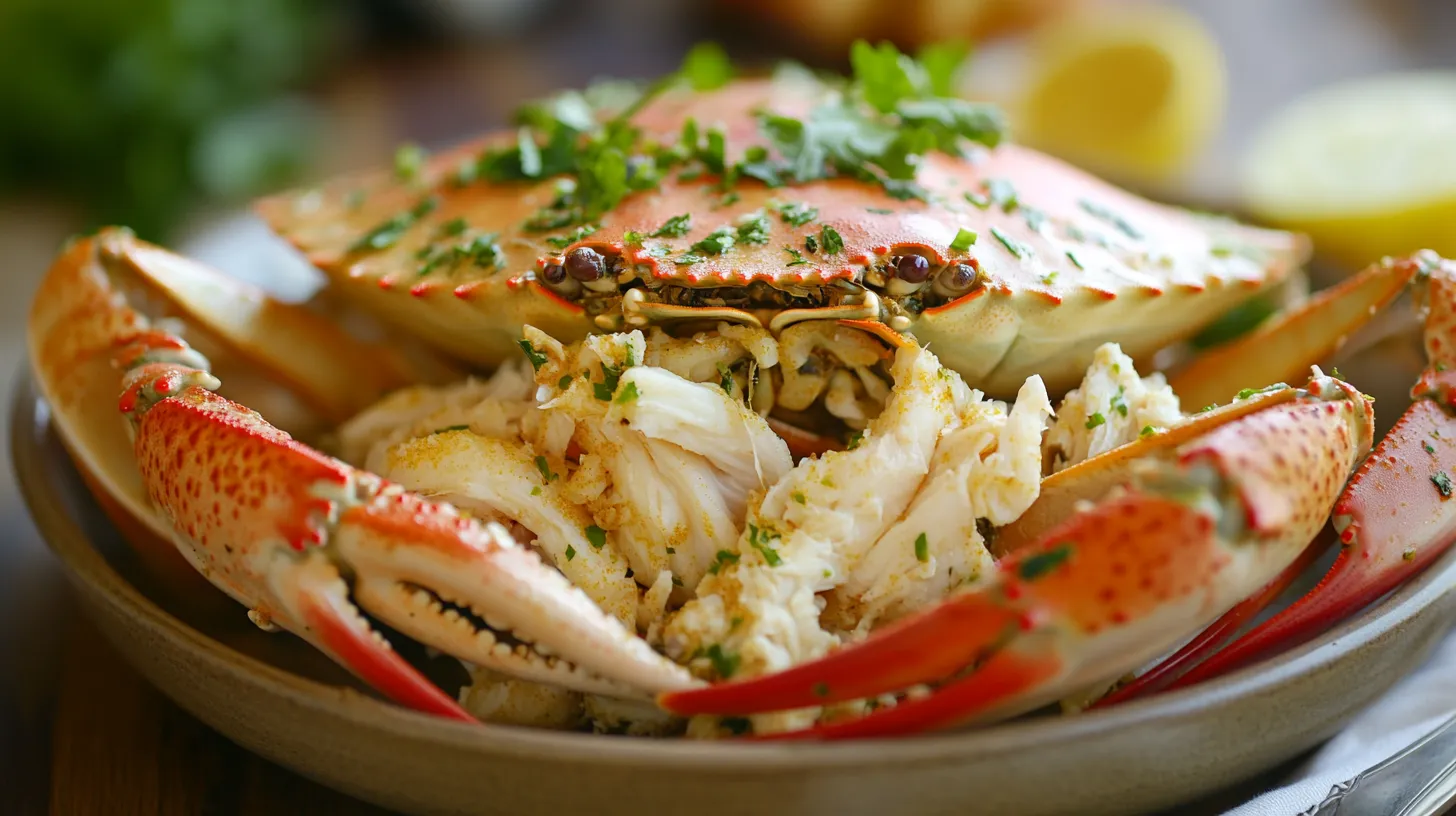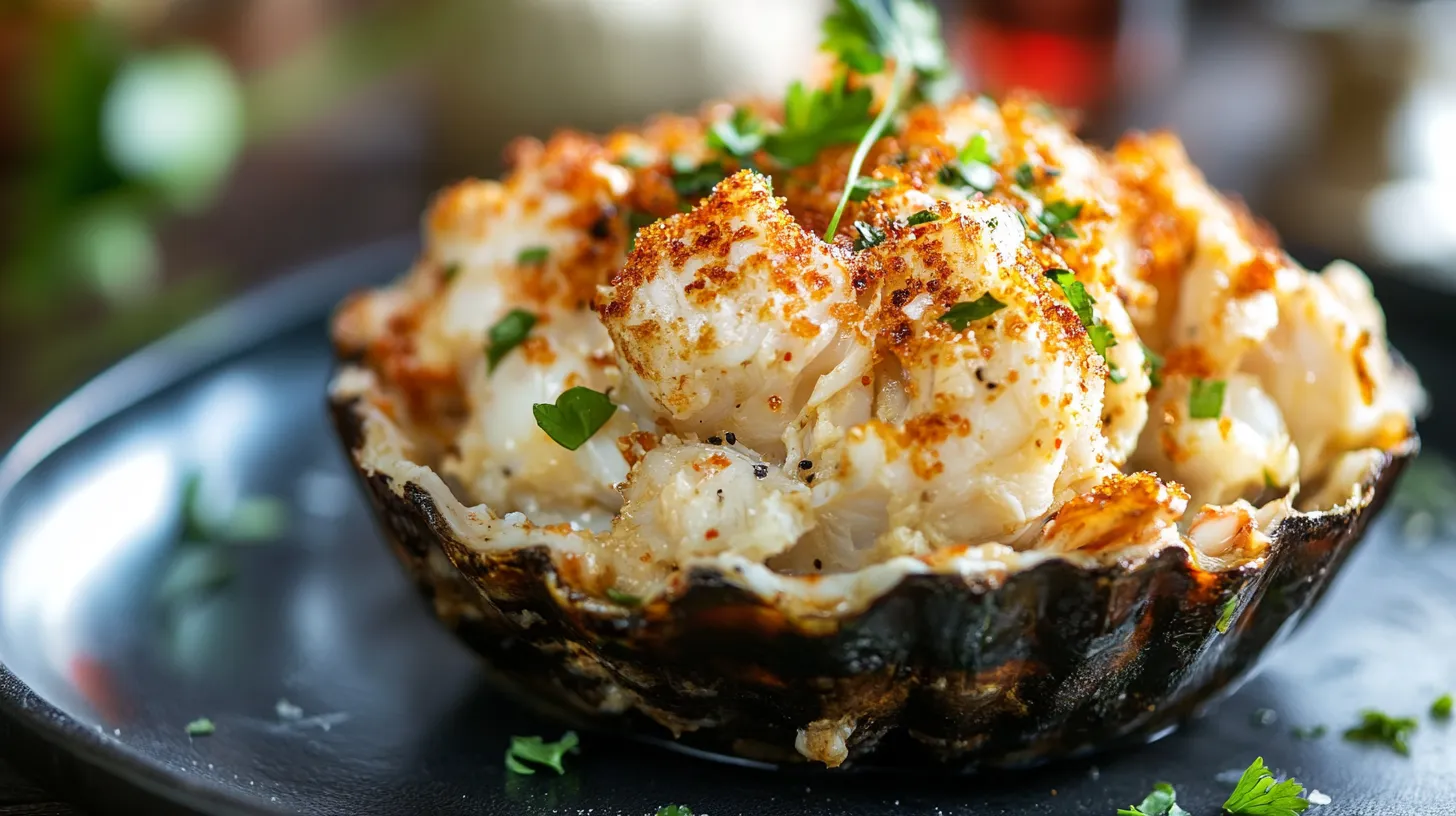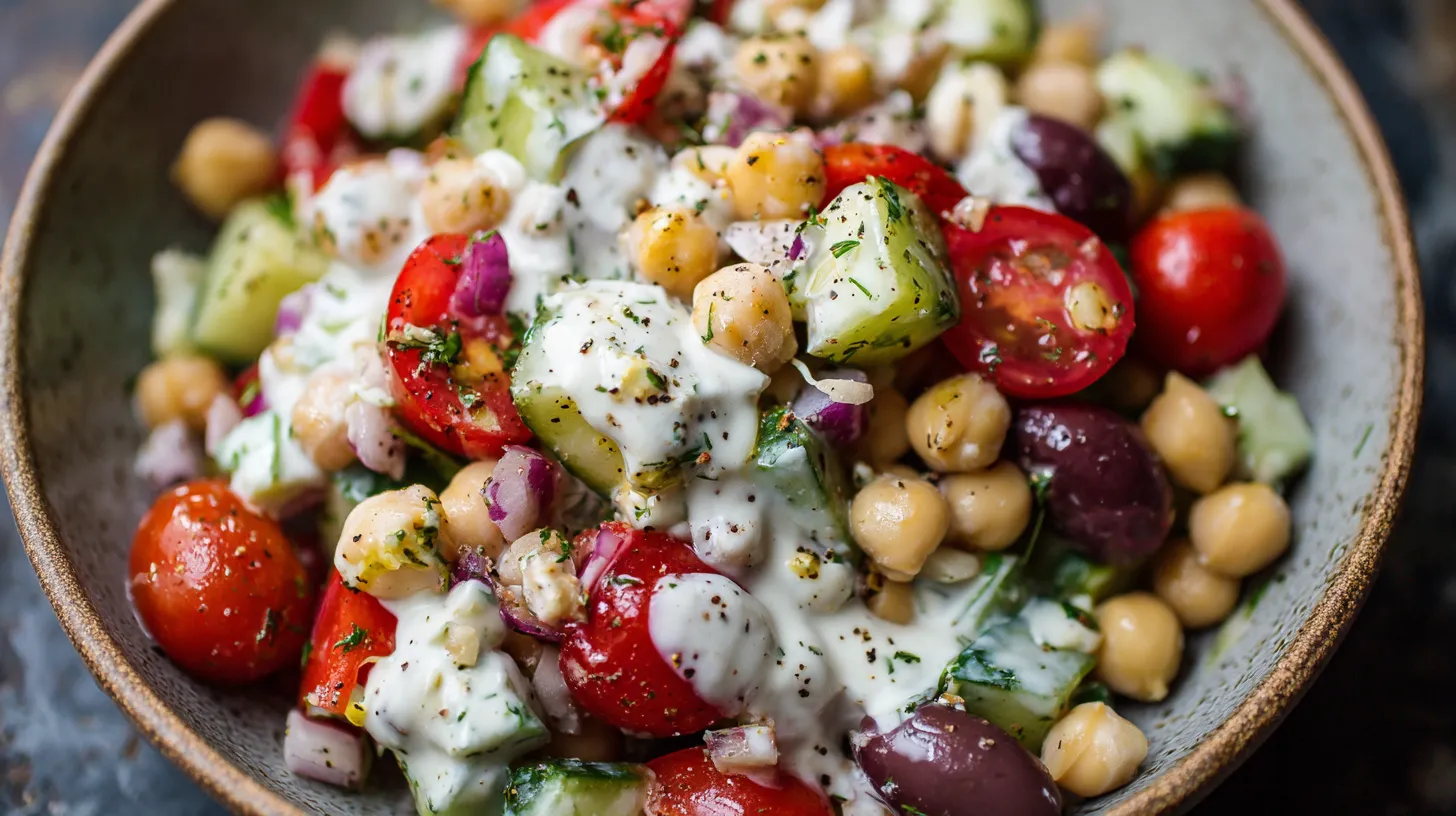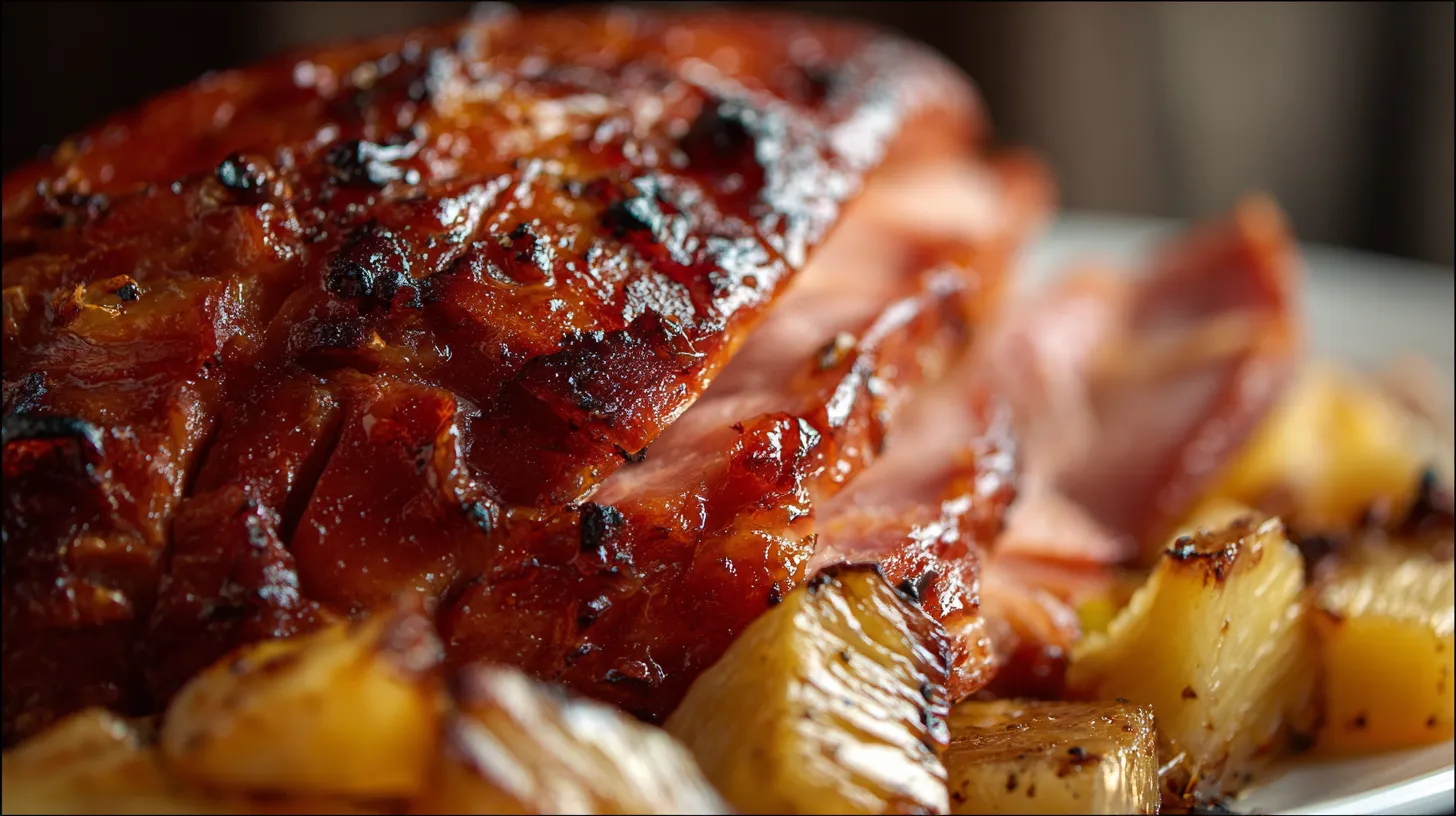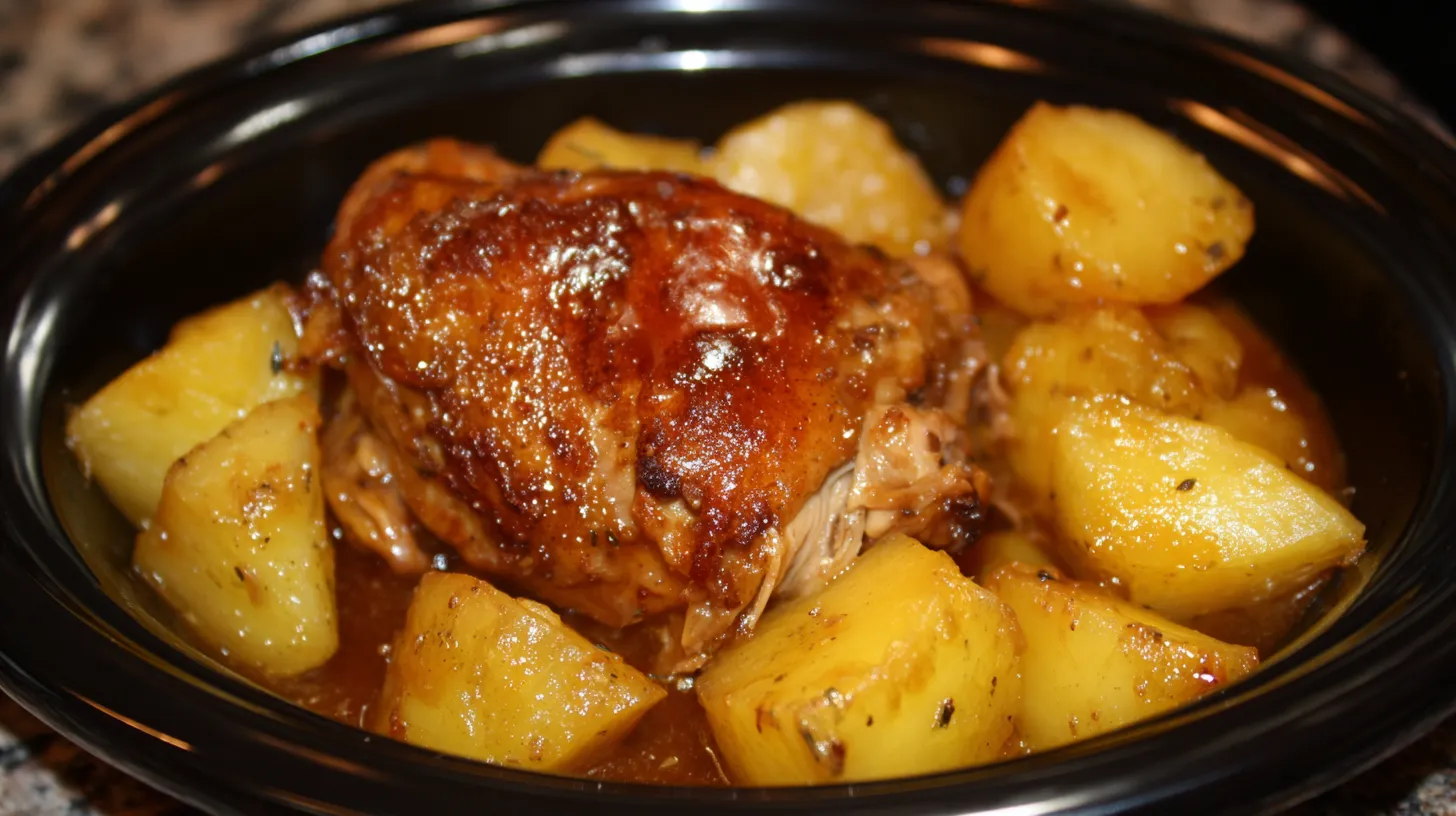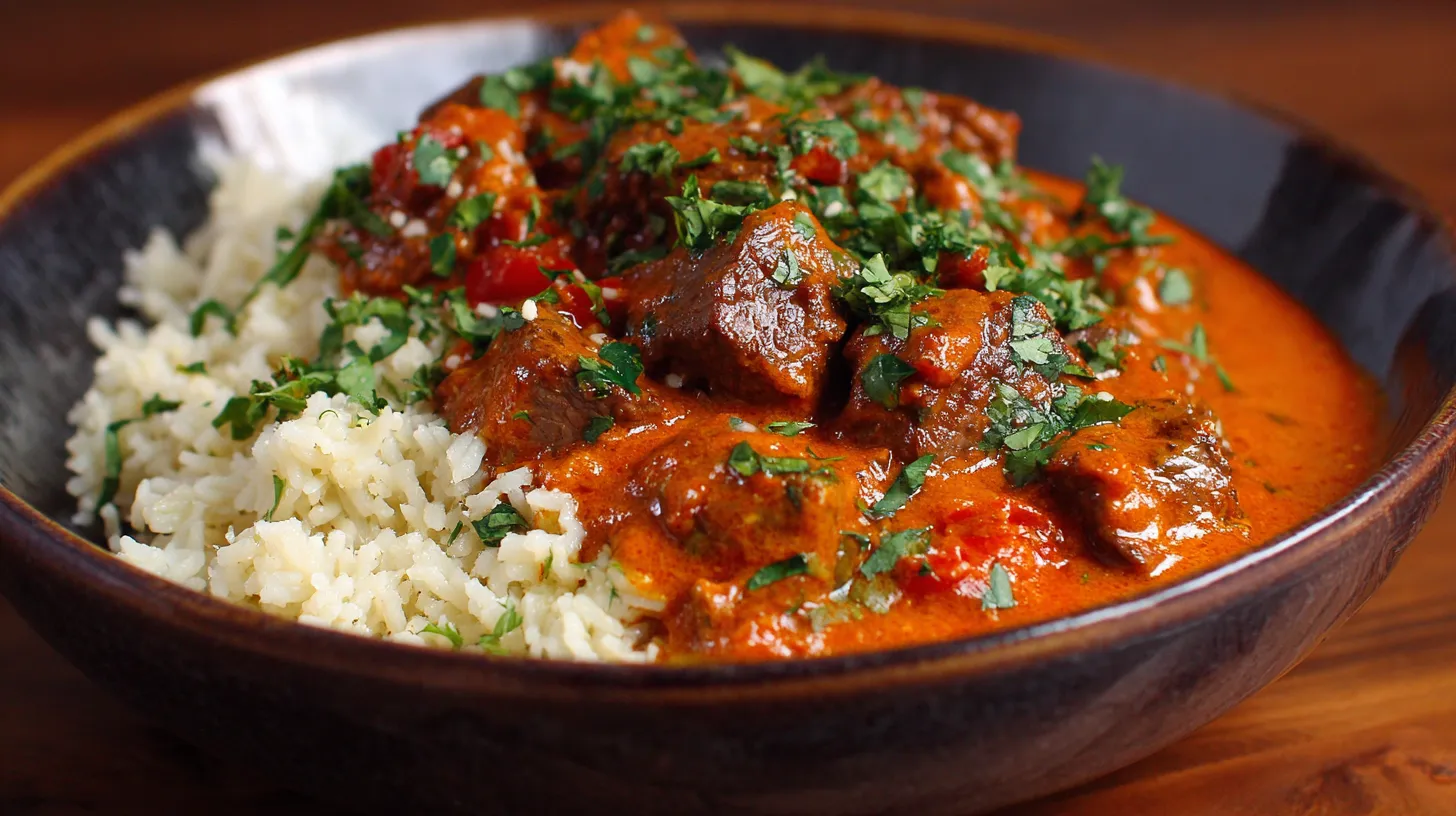Crab Imperial is a savory and creamy seafood dish that’s as rich in flavor as it is in history. Known for its deliciously buttery and delicate texture, this dish is a regional favorite along the Chesapeake Bay, from Maryland to Virginia. In this guide, we’ll break down everything you need to know—from ingredients to preparation, history, and variations. Whether you’re hosting a dinner party, craving a weeknight treat, or looking to impress guests at a special occasion, Crab Imperial will always leave an impression.
The Chesapeake Bay region is famous for its seafood, and Crab Imperial stands out as a quintessential coastal dish that has been a beloved part of the area’s food culture for generations. With roots going back to the 19th century, Crab Imperial is steeped in culinary heritage and continues to be a celebrated dish in both upscale dining and casual seafood spots. This dish is all about showcasing the natural sweetness of blue crab while enhancing its flavors with a creamy, rich sauce.
What is Crab Imperial?
Crab Imperial is a baked seafood dish made with lump crabmeat, blended with a rich imperial sauce. It’s a staple in seafood restaurants along the Eastern Shore, known for its golden-brown top and creamy interior. The crab meat itself is the star, with a delicate sweetness that’s perfect for soaking up the flavors of the sauce. The imperial sauce typically consists of ingredients like mayonnaise, mustard, lemon juice, and Parmesan cheese, which are all combined to create a decadent base for the crab.
This dish is usually served as an appetizer or entree and is a popular menu item in places that celebrate coastal cuisine, like Baltimore, Annapolis, or Virginia Beach. It’s a true comfort food for those who live by the water and for seafood lovers everywhere, often served at family gatherings, holiday meals, and waterfront restaurants.
Whether you enjoy Crab Imperial at a high-end restaurant or prepare it in the comfort of your own home, it’s always a crowd-pleaser. Its versatility, rich flavor, and creamy consistency make it an ideal dish for special occasions, but it’s also simple enough to be a favorite weeknight meal.
Ingredients for Crab Imperial
To make Crab Imperial, you’ll need the following fresh ingredients:
Main Ingredients:
- 1 lb Lump Crabmeat (Preferably jumbo lump for the best flavor)
- 1/2 cup Mayonnaise
- 1 tbsp Dijon Mustard
- 1 tsp Lemon Juice
- 1/4 cup Grated Parmesan Cheese
- 1/4 cup Breadcrumbs
- 1 tbsp Chopped Parsley
- 1/4 cup Finely Chopped Onion
- 1 tbsp Butter (melted)
- Salt and Pepper to taste
- Old Bay Seasoning (optional, but it’s a classic Chesapeake Bay spice blend!)
Optional Garnishes:
- Lemon Wedges
- Additional Chopped Parsley
- Crackers or Crusty Bread for serving
- Paprika for added color
The use of Old Bay Seasoning is optional, but highly recommended for an authentic Maryland flavor. The seasoning is an iconic blend associated with the Chesapeake Bay region and adds that extra touch that makes Crab Imperial taste just right.
Step-by-Step Preparation
Here is a simple way to make Crab Imperial. The steps are easy and quick, perfect even for a weeknight dinner.
1. Prepare the Ingredients
- Preheat your oven to 375°F (190°C).
- Pick through the crab meat to remove any shell fragments. Be gentle so you don’t break up the delicious lump pieces. This ensures the texture remains delicate and flavorful.
2. Make the Imperial Sauce
- In a mixing bowl, combine the mayonnaise, Dijon mustard, lemon juice, Parmesan cheese, and chopped onion.
- Season with Old Bay, salt, and pepper.
- Mix until all the ingredients are well combined, forming a creamy sauce that will help to bind the crab meat without overpowering its natural sweetness.
3. Fold in the Crab Meat
- Carefully fold the lump crab meat into the sauce. Be gentle—you want to keep the crab in large pieces for the best texture. The goal is to coat the crab without breaking it apart, preserving those large lumps that make the dish extra special.
4. Prepare the Baking Dish
- Place the crab mixture into a buttered baking dish or ramekins if you prefer individual portions. Ramekins add a touch of elegance and make it easier to serve as an appetizer.
- Sprinkle the breadcrumbs on top for a crisp, golden topping. This creates a lovely contrast to the creamy filling.
- Drizzle melted butter over the breadcrumbs for extra richness and to help achieve that perfect golden-brown crust.
5. Bake
- Bake in the preheated oven for 20-25 minutes, or until the top is golden brown and the mixture is bubbling. You want the flavors to meld together, and for the breadcrumbs to become beautifully crisp.
6. Serve
- Garnish with lemon wedges and parsley. The acidity from the lemon helps to balance the richness of the dish.
- Serve with crackers or crusty bread to soak up the creamy sauce. Crab Imperial also pairs wonderfully with a side salad for a balanced meal.
Tips for the Perfect Crab Imperial
Here are some helpful tips to make your Crab Imperial extra special:
- Use fresh crab meat if possible. Fresh lump crab or jumbo lump makes all the difference in flavor and texture. The quality of the crab really shines in this dish, so it’s worth seeking out the best you can find.
- Be gentle when mixing. Keeping the crab lumps intact is key for the best texture. The large pieces are what give Crab Imperial its signature mouthfeel.
- Don’t overbake. You want a creamy consistency inside, so bake until just golden. Overbaking can cause the crab to become dry and the sauce to curdle.
- Add a touch of Old Bay seasoning for a classic Maryland flavor. It gives a hint of spice that complements the sweet crab.
- Make ahead for easy entertaining: You can prepare the dish up to the point of baking, then refrigerate it until you’re ready to bake and serve. This makes it perfect for hosting, especially during the holidays.
Variations of Crab Imperial
Crab Imperial is versatile, and you can customize it to your liking:
- Gluten-Free Option: Use gluten-free breadcrumbs to make this dish suitable for those with gluten sensitivities. You’ll still get the crisp topping without compromising flavor.
- Stuffed Crab Imperial: Spoon the mixture into cleaned crab shells for a fun presentation. This is a classic way to serve Crab Imperial and adds a visual touch that is perfect for special occasions.
- Crab-Stuffed Fish: Spread a thin layer of Crab Imperial over a fillet of rockfish or wild bass before baking. It’s an amazing seafood pairing that elevates a simple fish fillet to something spectacular.
- Crab Imperial Dip: Turn this classic dish into a dip by adding a bit more mayonnaise and cream cheese. Serve it hot with crackers or crusty bread for dipping. This version is perfect for parties and gatherings.
- Crab Imperial with Pasta: Mix the Crab Imperial with cooked pasta for a luxurious, creamy seafood pasta dish that can be served as an elegant dinner entree. The sauce coats the pasta beautifully, making for a comforting and indulgent meal.
- Vegetable Additions: Add finely diced bell peppers, celery, or shallots for added texture and flavor. These vegetables complement the sweetness of the crab and bring more depth to the dish.
Crab Imperial vs. Crab Cake
You may wonder: how is Crab Imperial different from a crab cake?
- Crab Imperial is baked in a dish, while crab cakes are shaped into patties and often fried. This gives Crab Imperial a creamy, custard-like consistency, while crab cakes have a crisp exterior.
- Crab Imperial has a creamy texture with mayonnaise and cheese, while crab cakes focus more on the crab with minimal filler. Crab Imperial is all about the rich, decadent sauce that binds the crab together.
- Crab Imperial tends to be richer, making it a dish that’s ideal for special occasions, whereas crab cakes are often served in a more casual setting, like a cookout or picnic.
- Flavor Profiles: Crab Imperial leans into its rich and creamy profile, whereas crab cakes aim for a balance of crispy exterior and tender, meaty interior.
Both are delicious, but Crab Imperial is ideal for when you want something a bit more decadent and rich—the perfect indulgence.
Serving Suggestions
Crab Imperial is perfect for a variety of occasions. Here are some serving ideas to make your meal extra special:
- Serve as an appetizer at a dinner party. The individual ramekins make it feel fancy and elegant.
- Pair with a simple green salad and crusty bread for a light meal. The fresh salad helps to balance the richness of the Crab Imperial.
- Serve alongside other seafood dishes like steamed shrimp, oysters Rockefeller, or grilled rockfish for a true seafood feast that will delight any seafood lover.
- Add a side of roasted vegetables like asparagus, broccoli, or green beans to add some vibrant color and a fresh contrast to the rich dish.
- Top with a poached egg for a decadent brunch option, served with buttered toast on the side. The creamy yolk adds another layer of richness to the dish.
- Pair with a chilled white wine such as Chardonnay or Sauvignon Blanc. The acidity of the wine will complement the creaminess of the Crab Imperial perfectly.
| Serving Ideas | Description |
|---|---|
| Appetizer Portion | Serve in small ramekins to start a fancy meal |
| Light Dinner | Pair with salad and bread for a simple meal |
| Seafood Feast | Combine with other seafood for a special occasion |
| Special Occasion | Use as a topping for steak for a luxurious surf and turf dish |
| Brunch Delight | Top with a poached egg for an indulgent brunch option |
| Paired with Wine | Serve with a chilled white wine for an upscale touch |
History and Tradition
Crab Imperial is a dish with a lot of history tied to the Chesapeake Bay region. In Maryland and Virginia, crabbing culture has deep roots, and watermen have been harvesting blue crabs for generations. The Eastern Shore is full of seafood shacks and family restaurants where Crab Imperial has been a staple for decades.
This dish reflects the region’s culinary heritage, bringing together local ingredients like blue crab with classic Southern cooking techniques. The use of Old Bay seasoning also highlights the dish’s ties to the Mid-Atlantic and its unique flavor profile. Old Bay, created in Maryland, has become synonymous with the flavors of the Chesapeake Bay and is often used to enhance seafood dishes.
The tradition of crab picking and steaming crabs is deeply ingrained in the culture of Maryland and Virginia. Families often gather for crab feasts, where large platters of steamed blue crabs are shared. This sense of community is part of what makes dishes like Crab Imperial so special—it’s not just about the food; it’s about the memories created around it.
Crab Imperial also found its way into upscale dining throughout the Mid-Atlantic region, becoming a popular choice for banquets, holiday gatherings, and restaurant specials. Today, it’s enjoyed both at casual seafood shacks and high-end restaurants, showing just how versatile this dish is.
Origins and Evolution
It is said that Crab Imperial originated in the 19th century, with early recipes emphasizing the simplicity and the use of locally sourced blue crab. Over time, the recipe evolved, and it became a popular dish among the elite of the time, often served at grand occasions and gatherings. The Eastern Shore remains a hub of this culinary tradition, where chefs continue to innovate while respecting the classic methods.
As with many classic dishes, Crab Imperial tells a story of a region—the people, the waters, and the culinary traditions that have been passed down through generations. It represents the heritage of Chesapeake Bay cooking, where the love for fresh seafood and community gatherings runs deep. Preparing and serving Crab Imperial is a way of keeping this delicious history alive.
Why Crab Imperial is a Crowd-Pleaser
- Easy to Prepare: With simple ingredients and easy steps, you can have a delicious dish on the table in under an hour. It’s perfect for both beginner and experienced cooks.
- Rich and Decadent: The mayonnaise and Parmesan cheese create a creamy, rich texture that feels indulgent. The breadcrumb topping adds a nice crunch that contrasts perfectly with the creamy interior.
- Flexible Serving: You can make Crab Imperial in a large baking dish for a family-style meal or bake it in ramekins for a more elegant presentation. It fits well into many different types of menus, from casual to formal.
- Works for Many Occasions: Whether it’s a weeknight dinner, a holiday feast, or a fancy gathering, this dish fits right in. Its versatility makes it an ideal choice for any event.
- Classic Flavor: The combination of Old Bay seasoning, Parmesan cheese, and lemon juice gives Crab Imperial that signature flavor that is savory, bright, and deeply satisfying. The crab’s natural sweetness is perfectly balanced by the richness of the sauce and the acidity of the lemon.
- Customizable: You can add other elements like bell peppers, shallots, or herbs to make it your own. The basic recipe is a fantastic base for your creativity, allowing you to adapt it to your preferences or dietary needs.
- Comfort Food: The creamy texture and buttery breadcrumbs give it a comforting quality that makes it perfect for cooler weather and cozy nights in. It’s also a wonderful dish to share, evoking the warmth of family gatherings and home-cooked meals.
- Perfect Balance of Texture and Flavor: The creamy filling contrasts beautifully with the crispy breadcrumb topping, creating a balance that makes each bite satisfying.
Frequently Asked Questions
What kind of crab should I use?
Jumbo lump crabmeat is the best choice for Crab Imperial. It has a sweet flavor and stays in large pieces for the ideal texture. If you can’t find jumbo lump, you can use lump crabmeat.
Fresh crab meat is always ideal, but you can also use refrigerated crab meat if fresh isn’t available. Avoid using canned crab, as the flavor and texture won’t be quite the same. For the best results, visit a seafood market where you can get freshly picked blue crab.
Can I make Crab Imperial ahead of time?
Yes! You can prepare the mixture up to a day ahead. Store it in the refrigerator and bake just before serving. It’s perfect for holiday entertaining or dinner parties when you want to minimize prep work. Just be sure to cover the dish to prevent the mixture from drying out before baking.
How do I reheat leftovers?
To reheat Crab Imperial, place it in a preheated oven at 350°F for about 10-15 minutes. Make sure it is warmed through without overcooking. You can also cover it with foil to help maintain moisture while reheating.
Can I freeze Crab Imperial?
While it’s possible to freeze Crab Imperial, it’s best enjoyed fresh. Freezing may affect the creamy texture. If you do freeze it, make sure it’s tightly wrapped, and thaw it completely before reheating. Keep in mind that the delicate flavor of the crab is at its peak when the dish is freshly baked.
How can I make Crab Imperial healthier?
To make a lighter version of Crab Imperial, try using Greek yogurt in place of mayonnaise and cut down on the cheese. You can also use whole wheat breadcrumbs and add more fresh herbs to enhance the flavor without adding extra calories. Using a low-fat mayonnaise can also help reduce the overall richness.
Final Thoughts
Crab Imperial is a classic seafood dish that has stood the test of time. With its creamy texture, savory flavor, and golden-brown crust, it’s easy to see why this dish has remained a favorite along the Chesapeake Bay and beyond. Whether you’re serving it as an appetizer at a dinner party or as a comforting main course, Crab Imperial is sure to be a hit.
If you’ve never made it before, give it a try! The rich, buttery crab paired with a creamy sauce and crisp breadcrumb topping is pure seafood heaven. And if you have made it before, maybe it’s time to revisit an old favorite and share it with friends and family.
Take some time to explore the many variations and serving suggestions. Make it a weeknight go-to or a special holiday dish. No matter when or how you serve it, Crab Imperial brings the taste of the coastal waters of Maryland and Virginia right to your table.
Enjoy this dish, and let the flavors take you on a trip to the coastal waters of Maryland and Virginia, where every bite tells a story of the rich history and culinary heritage of the Chesapeake Bay region. Imagine the watermen bringing in the daily catch, the fresh blue crabs steamed and picked, and the care that goes into making a dish that has been cherished for generations. Whether it’s a fancy dinner party or a casual get-together, Crab Imperial is always a crowd-pleaser, connecting people through a shared love of great seafood and regional traditions. Let the traditions continue, and share the warmth and joy that comes with a beautiful dish like Crab Imperial.
